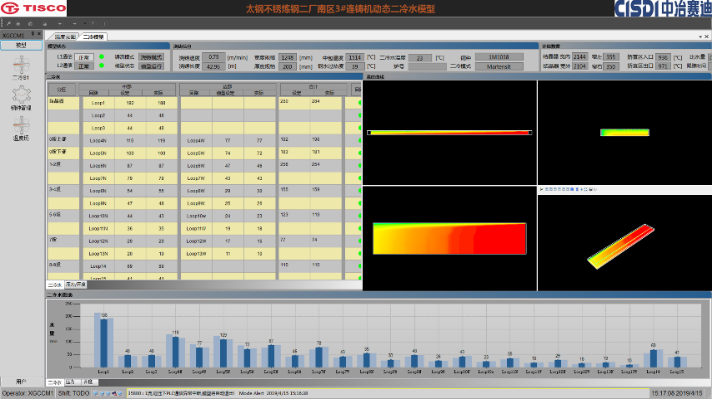CISDI successfully rebuilds TISCO’s ageing caster 3
Date:2019/5/20 Source: CISDI
CISDI
successfully rebuilds TISCO’s ageing caster 3
CISDI has
successfully rebuilt TISCO’s caster 3.
The 16-year-old
combined square bloom and slab caster was not functioning correctly. Its
secondary cooling control system had failed to apply the cooling model to
control slab edge water flow. An unreliable regulating valve could not regulate
water stably in the event of a low flow.
CISDI has
replaced them with its unique secondary cooling dynamic control model.
Optimised
design has also been implemented to solve a problem which was resulting in a
serious blocking of the caster’s nozzles, and to improve the arrangement of the
secondary cooling loops, instruments and spraying.
TISCO’s caster
3 rebuild is shining example of how CISDI’s secondary cooling dynamic control
model can dramatically improve stainless steel casting, a sector which has been
exclusively-dominated by suppliers outside of China.
After the
rebuilds, on the first run, ferritic stainless steel 0Cr13R was cast
successfully with a cross section dimension of 200mm x 1,235mm. A uniform
distribution of surface temperature and a stable control of width were
achieved. The first casting speed ranged from 0.9 to 1.05 metres a minute.
Analysis showed
the slab’s central segregation had reached Mannesmann 1 level, and its equiaxed
crystal ratio had surpassed 60 per cent.
Since the first
cast, slab grades 0Cr13R, 2Cr13, 430, 409, 20Mn23AlV, 441, 443 and 308 have
been achieved.

TISCO’s caster 3 ejects its first stainless
steel slab for the first cast
The
benefits of CISDI’s 3D secondary cooling dynamic control model
The model ensures optimal strand temperature and
high quality slab.
It automatically matches steel grades with
proper control strategy.
Secondary cooling water flow and compressed air
flow can be real-time adjusted to strand temperature.
From any duty position, operators are able to
read strand’s real-time temperature status and make optimisation decisions.

A screen shot of CISDI’s model performing hot
strand tracking

